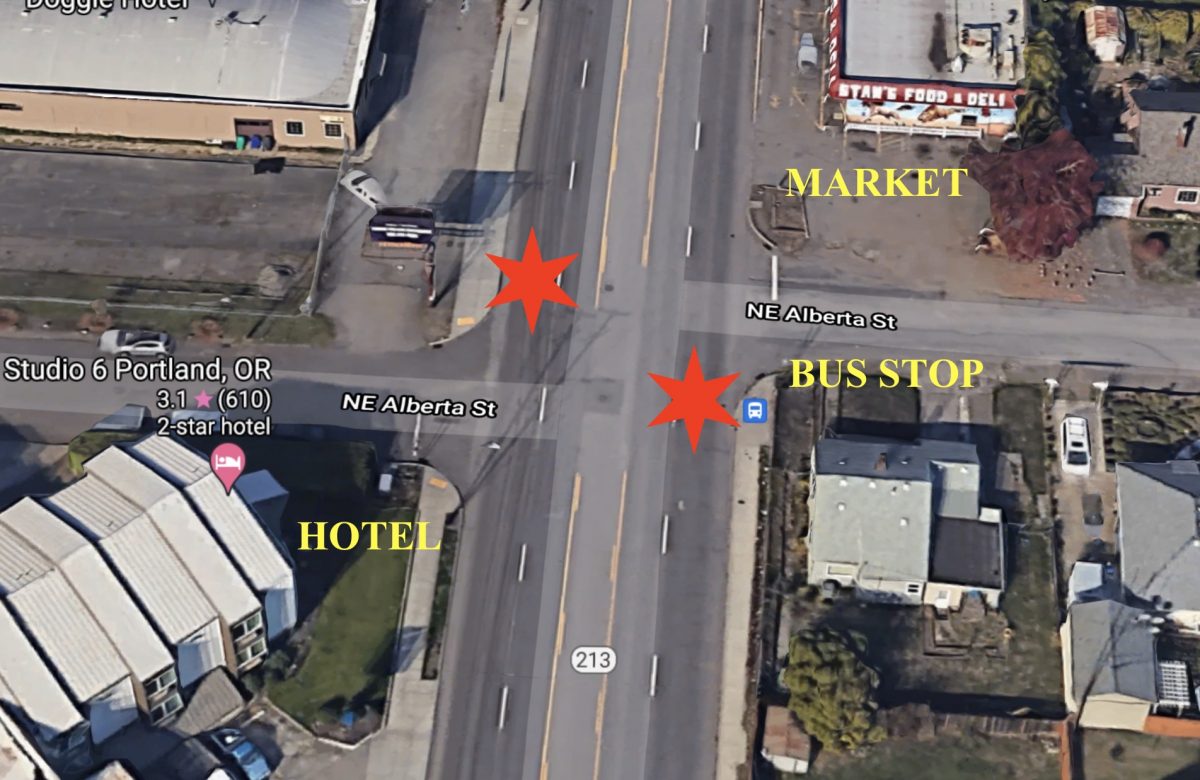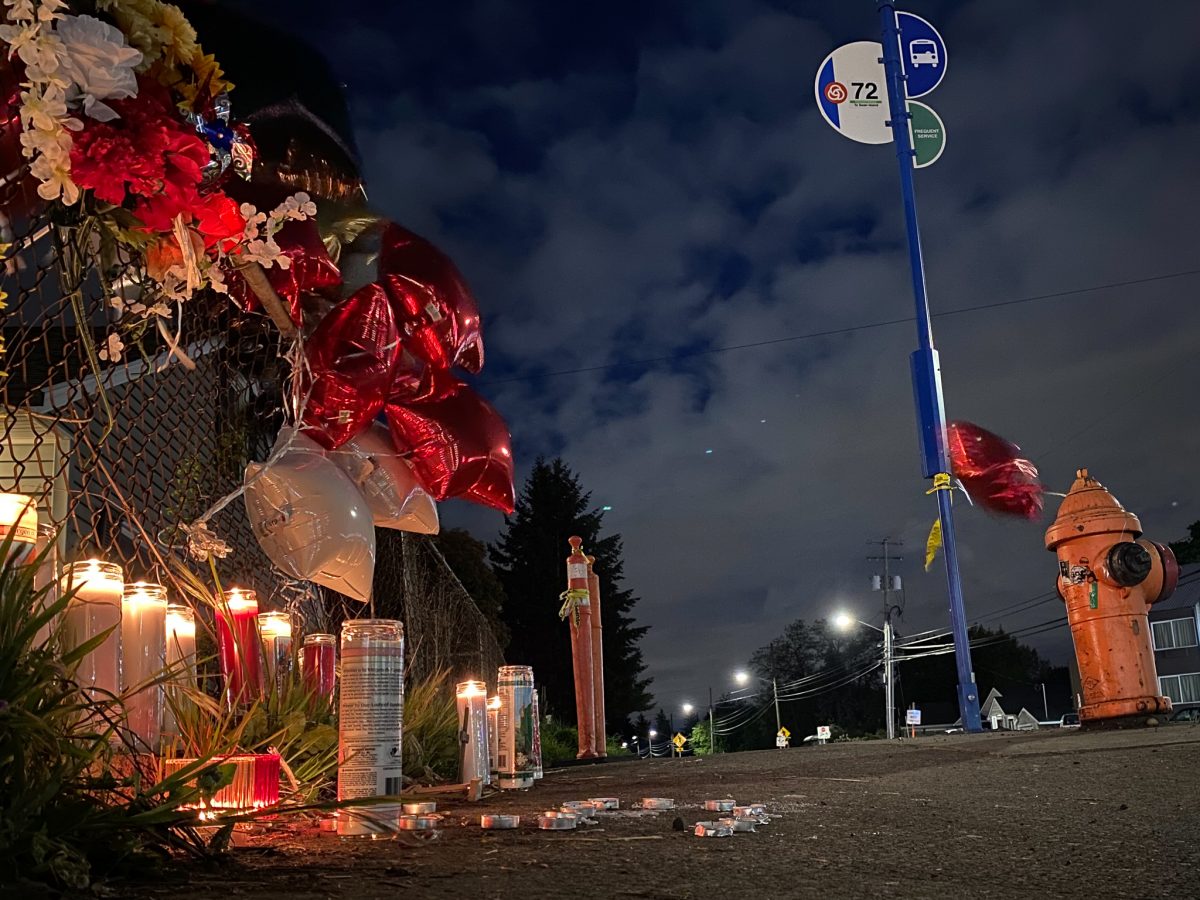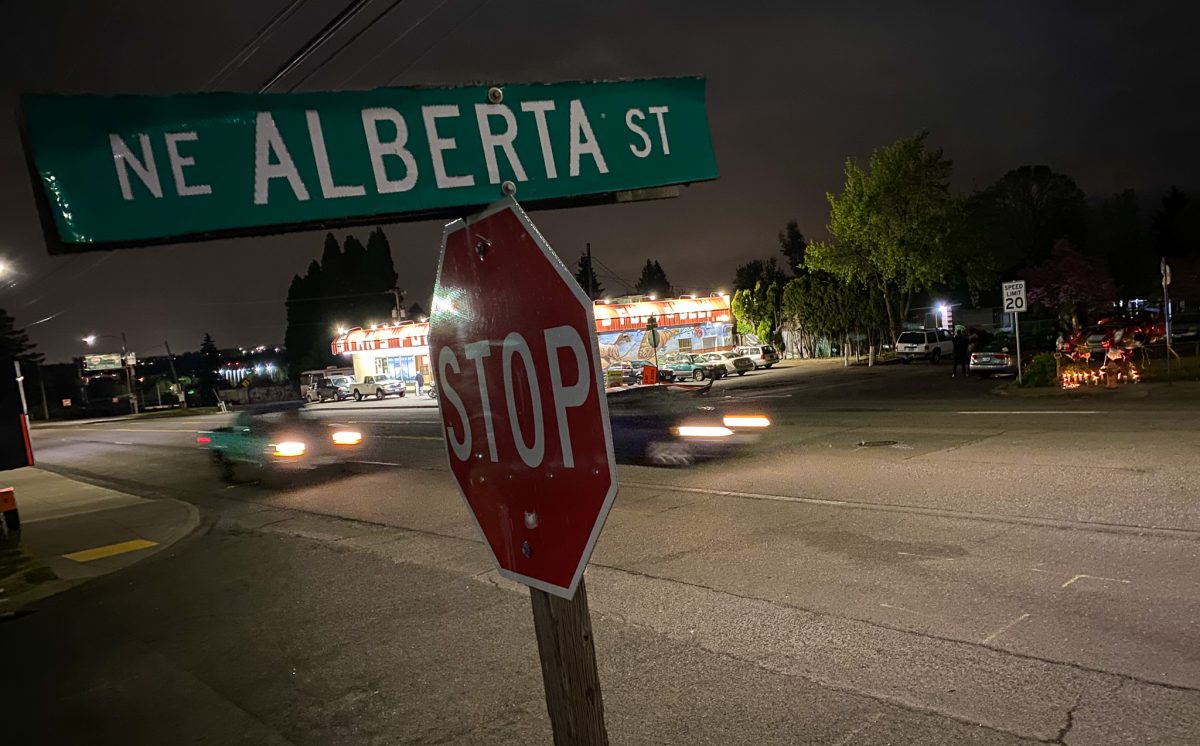
(Photos: Jonathan Maus/BikePortland)
Two people have been killed while walking across Northeast 82nd Avenue in the past two weeks. They were both hit by car users. That alone would be cause for alarm. The fact that both people were hit at the same intersection demands attention and action.
Here’s what we know so far about the fatalities:
On April 10th at around 9:10 pm, police responded to the intersection of 82nd and NE Alberta. 66-year-old Brookings, Oregon resident Stephen Looser was dead in the street and the driver who hit him was on the scene. According to a person I spoke to, the man was crossing from east to west. He had almost made it across all five lanes before being hit by a southbound driver near the northwest corner of the intersection. According to the Portland Police Bureau, “visibility and lighting conditions are being looked at as factors.”
On April 24th just after 11:00 pm, 30-year-old Anthony Tolliver was also on the east side of the intersection. When he stepped into the roadway, he was hit by a northbound driver and thrown several dozen feet before coming to rest in the center turn lane. The driver did not stop and remains on the loose as the Portland Police Bureau investigate.
Advertisement
It’s easy to see why people need to cross 82nd at Alberta. It’s also easy to see why it’s so perilous. I visited the intersection late last night to learn more.
Alberta is in the middle of a half-mile stretch of 82nd (between Prescott and Killingsworth/Hwy 30) that has no marked crosswalks. 2,600 feet of highway with no help getting across. (There’s a concrete median island at Wygant one block south of Alberta, but for some reason there’s no painted crosswalk to get to it.) An analysis done as part of the City of Portland’s “PedPDX” Pedestrian Plan, “revealed that crashes at unmarked locations are more likely to occur where marked crosswalk spacing does not meet the new PedPDX crossing spacing guidelines.”
Those guidelines, adopted by Portland City Council in 2019, call for a recommended crosswalk spacing of 800 feet. When a transit stop is nearby, PedPDX calls for a crosswalk within 100 feet. “Moving forward, PBOT practice will be to provide a marked pedestrian crossing at all transit stops,” reads the plan.
As I stood at a memorial with balloons and candles set up by Anthony Tolliver’s friends and family last night, two Line 72 bus operators pulled over to give me a ride. Tolliver was hit just a few feet from the stop.
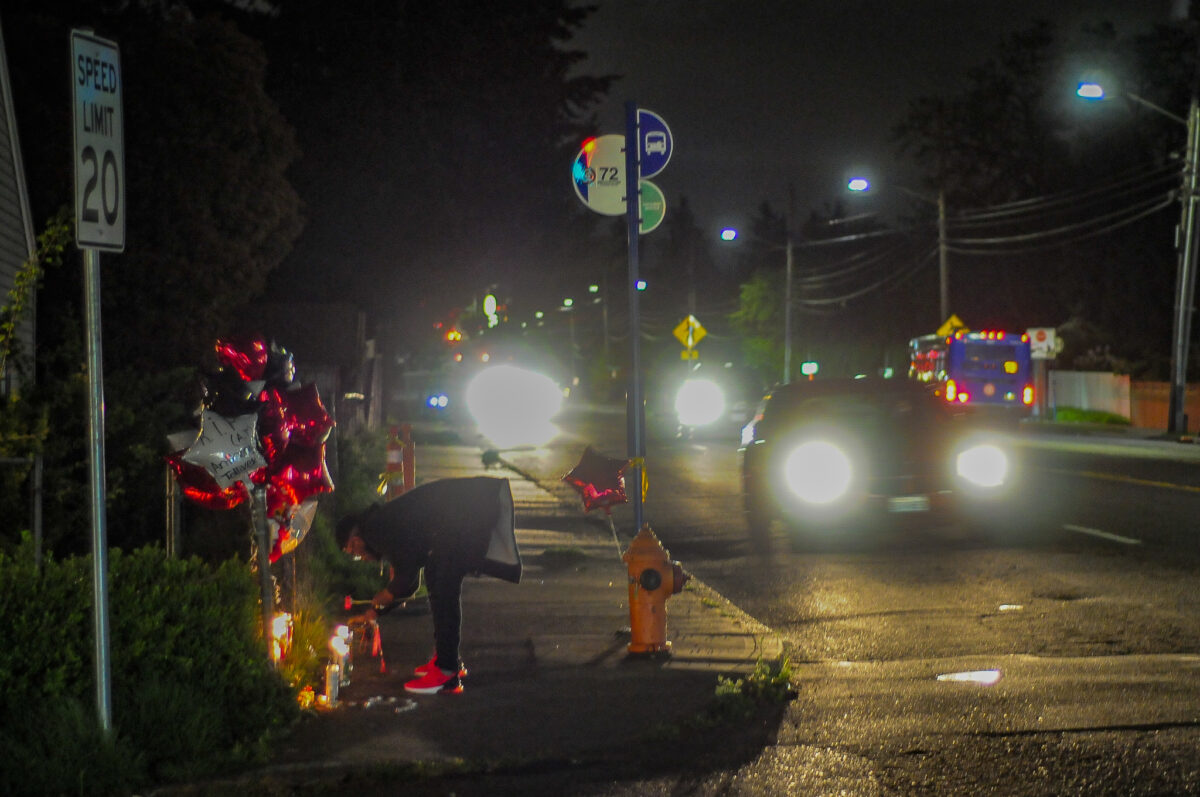
The fact that both of these deaths occurred at night is also not a surprise, especially given the inconsistent street lighting at this location. There is some light, but it’s patchy and there are large swaths that remain dark — especially at Alberta. Stan’s Food & Deli just north of the intersection beams bright lights into the street, but when those lights end, the street darkens.
A Stan’s employee told me she never goes near the street. “It’s so busy. So unsafe,” she said. “We need to have more street lights. It’s so dark at that corner.”
According to the Oregon Walks Fatal Pedestrian Crash Report released last month, 79% of the 48 pedestrian fatalities between 2017 and 2019 happened when it was dark. Inadequate lighting was determined to be a factor in 58% of them.
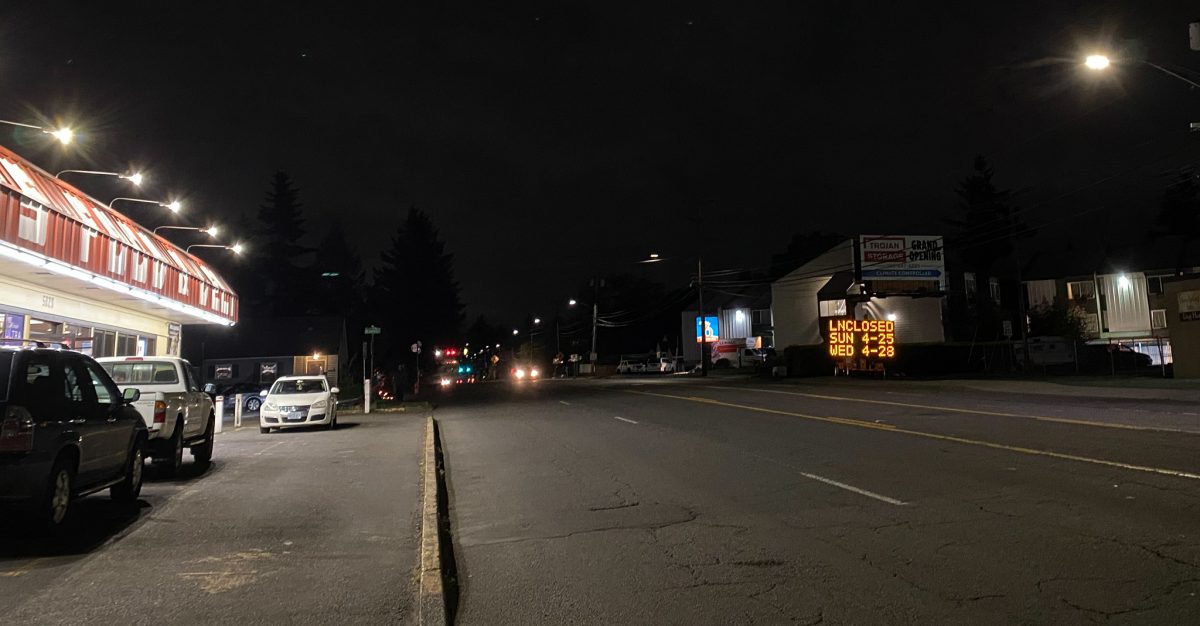
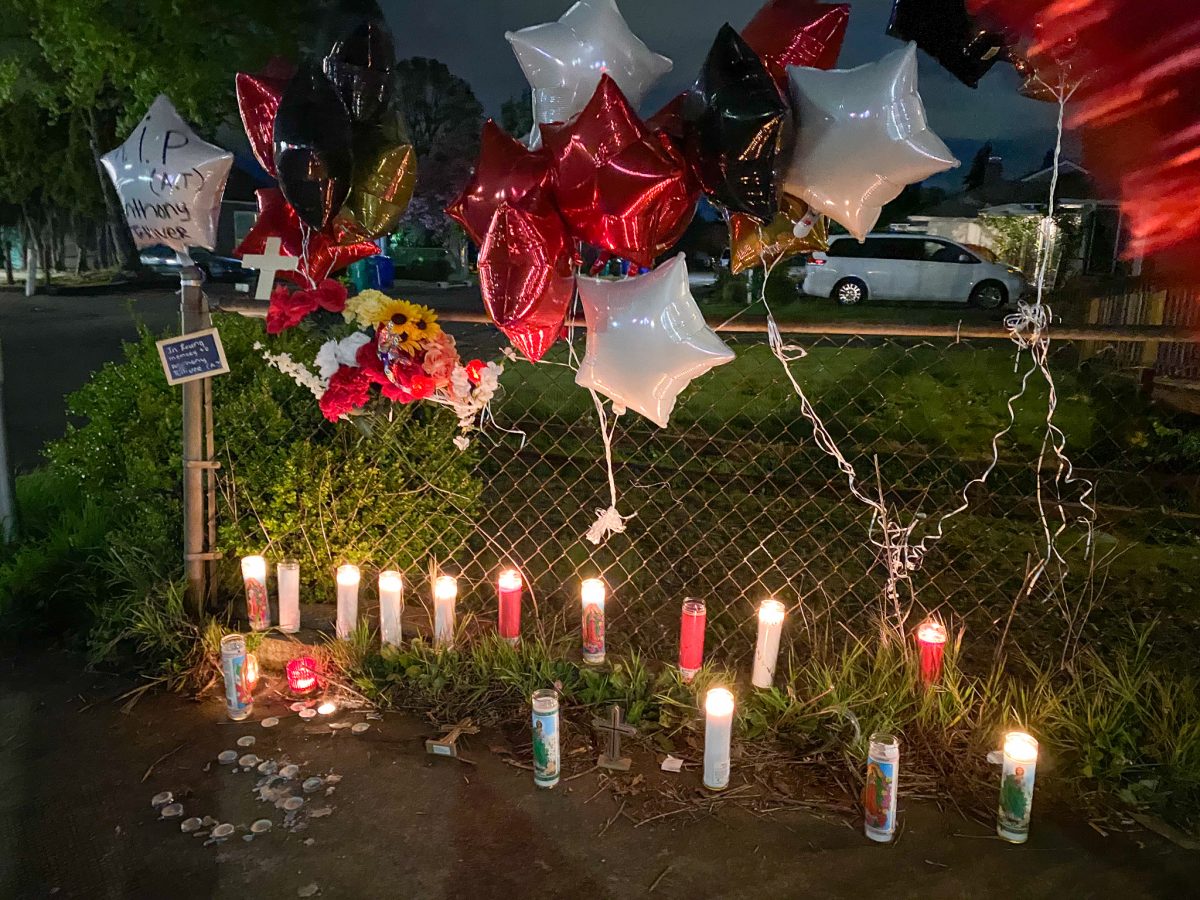

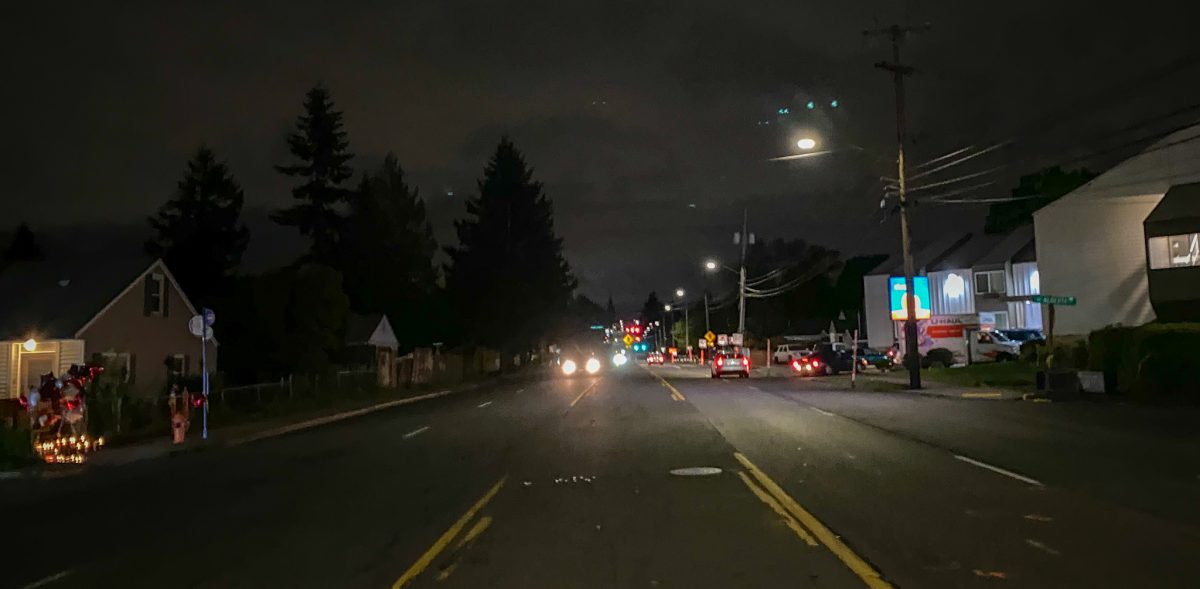
The Oregon Walks report also found that Black people were three times more likely to be killed while walking than white people. And the death rate for older people (65+) is three times higher than younger ones. Another factor to consider is that the zip codes adjacent to these deaths have the highest “environmental justice populations” (according to ODOT analysis using US Environmental Protection Agency data based on race, income, education, language, and other factors).
Northeast Alberta Street is usually associated with its fun and welcoming, shop and restaurant-filled commercial district between 10th and 33rd. But three miles east it has a much different vibe. An unassuming Alberta spills into 82nd at an off-set (the corners don’t match up) and drivers speed by at 40-plus miles an hour (the posted limit is 35). It’s one of those intersections where — even in a car — you hold your breath and nose out, hoping a gap will form at the right moment so you can stamp the gas pedal and scurry into traffic.

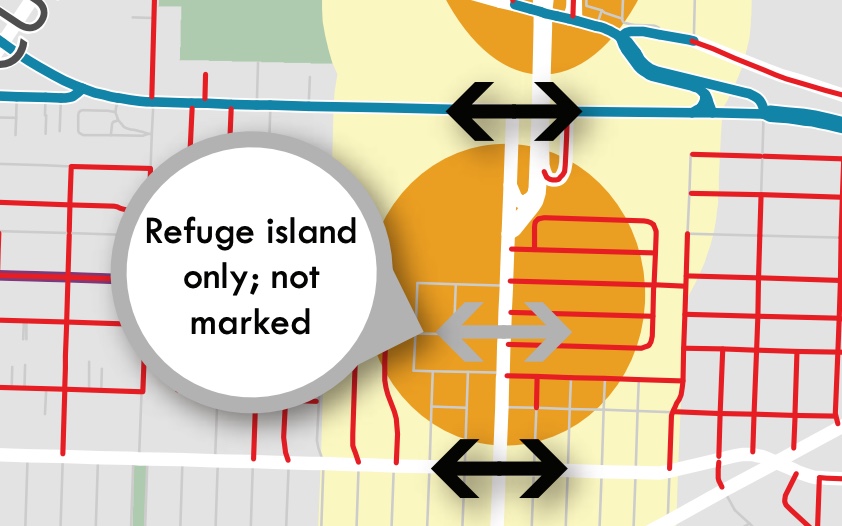
82nd is also State Route 213/Cascade Highway, owned and operated by the Oregon Department of Transportation. Three years ago we reported that local elected officials and safety advocates were fed up with ODOT’s management of 82nd. Worried that ODOT didn’t share the values of the local community, they wanted to hasten the transfer of ownership from state to local control. The outcry followed release of ODOT’s 82nd Avenue of the Roses Implementation Plan, a two-year effort that one volunteer advisory committee member said was nothing more than ODOT, “wasting 2-1/2 years of the community’s time in order to make it look like they were doing something without really doing something.”
“Community members desire more frequent enhanced crossings and more enhanced crossings near bus stops on 82nd Avenue,” reads the three-year-old plan which has resulted in neither where these two people were killed.
The state and city’s foot dragging and collective lack of action have allowed 82nd to hold Portlanders hostage. There’s no safe place for people in this neighborhood to cross the street, and no margin for error when they do. There’s a busy motel at one corner and a market at the other. Last night I saw a lot of people going from one place to the other. Each time they became nearly invisible for several seconds as they walked across the highway.
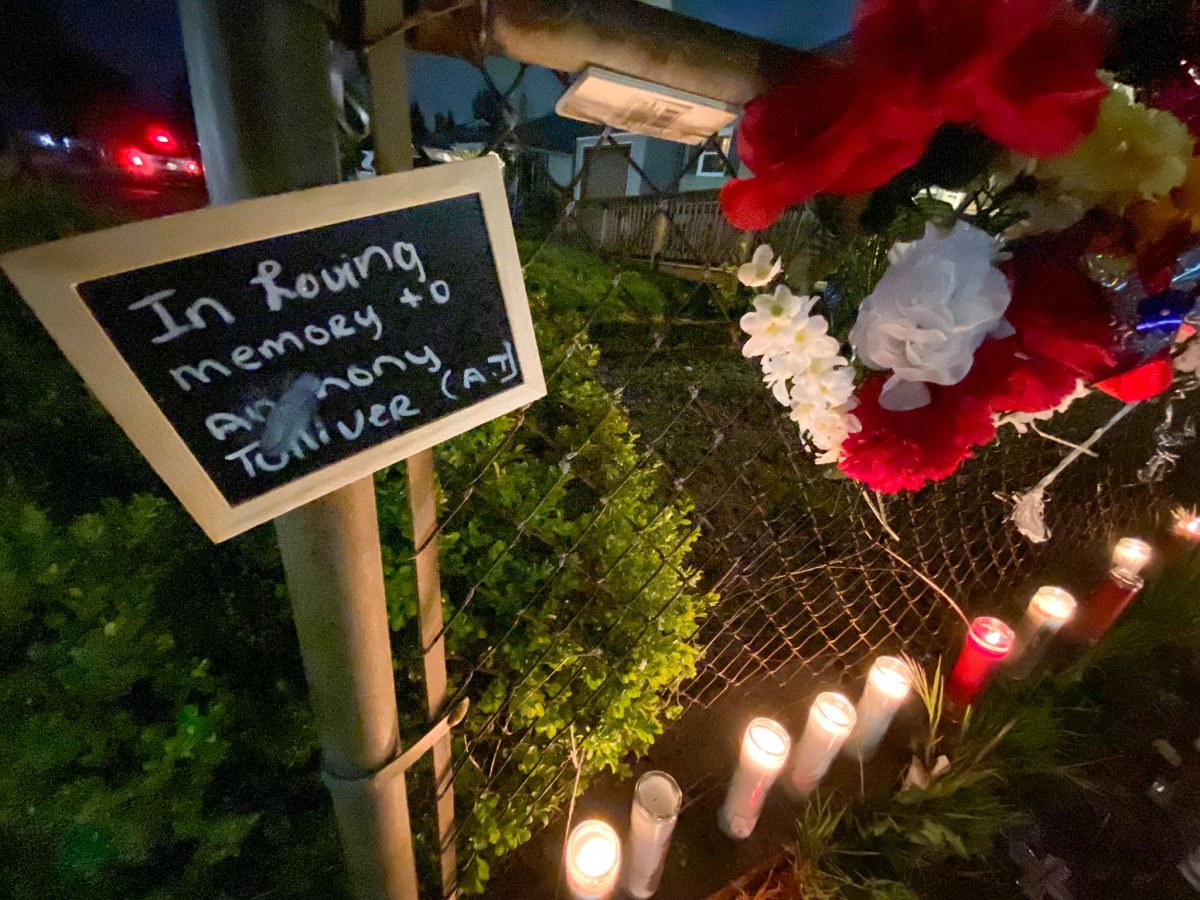

Anthony Tolliver had a huge family — many of whom showed up last night to hold a vigil and say goodbye.
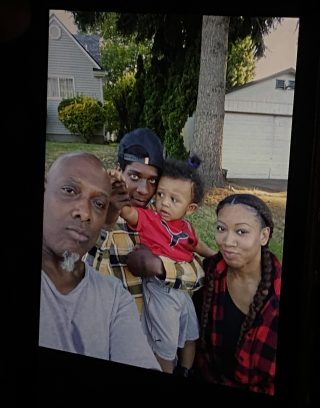
One of Tolliver’s nieces told me he grew up in Portland and had two kids and many siblings. “He was very low key and just so kind to the kids. His nieces and nephews loved him,” a woman named Chrissy shared.
One of Tolliver’s brothers, Prynce, showed up with shirt that had Anthony’s photo on the front and “RIP 5ive” on the back. That was his stage name, Prynce told me. He was a rapper and artist who loved to entertain people and make them laugh. Some other folks told me he was quite the comedian.
Later last night, another one of Tolliver’s brothers showed up. He dropped to his knees at the candles and sobbed. I stood far away, but could easily read his body language. He wasn’t just sad, he was mad. He approached me several minutes later and demanded to know what happened. I told him everything I knew (which wasn’t much). When I said someone at the motel had apparently witnessed it, he marched across the street in a search for answers.
Having just lost his brother in the same location, this man began to scream in the middle of the street. “There’s light here! And here! But no fucking light right here!” he yelled as he gestured with his arms and kicked over candles that had been lit in the center turn lane where Tolliver’s body was found. “You gonna’ stop now?! Huh?! Yeah you’re gonna’ stop now aren’t you!” he yelled at drivers in the street.
If we practice what we preach when it comes to equity and vision zero, we must do something at this intersection. Immediately.
Tolliver’s family has launched a GoFundMe to raise money for a funeral service.
— Jonathan Maus: (503) 706-8804, @jonathan_maus on Twitter and jonathan@bikeportland.org
— Get our headlines delivered to your inbox.
— Support this independent community media outlet with a one-time contribution or monthly subscription.


